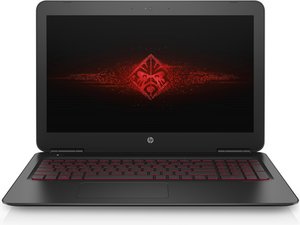Ways to fix-
If your laptop won’t power up, a faulty power supply, failed hardware, or a malfunctioning screen could be to blame [1]. In many cases, you may be able to resolve the problem yourself by ordering replacement parts or adjusting your laptop’s configuration.
But if your laptop is older and the problem is an expensive hardware issue, it may make be the best time to buy a new laptop.
1. Check the power supply and battery
If your HP laptop won’t turn on even when plugged in, start by checking the power supply. There are quite a few issues you could have with the power supply.
For example, the problem could be as simple as having the wrong charging cord which means you aren’t getting the proper voltage, or it could be that the power supply has failed [2].
To test if the power supply is the issue, completely remove your laptop battery.
Then, plug your laptop into a functioning outlet.
First, confirm the outlet is functioning properly by plugging another device into it - if it works, the issue isn’t the outlet.
If you can power on your laptop without the battery installed, the issue isn’t the power supply, it’s your battery.
You’ll need to buy a new one but, in the meantime, you can simply use AC power only.
It’s perfectly fine to use your laptop without the battery installed, it just means you’ll always have to be plugged into an outlet to use it.
CMOS battery
One other possible solution to test out is to replace the CMOS battery which stores the BIOS settings in the motherboard [3]. This is especially true if you're running an older laptop that is off a lot or used with the main battery removed. A new CMOS battery is very budget-friendly to replace.
Pro tip: Make sure that the cables are all properly connected. This might seem simple and obvious but most issues with a laptop that won’t turn on stem from a power supply issue. A loose or unplugged power cable means your computer isn’t getting the juice it needs to run.
2. Diagnose screen issues
If your power supply is working, you will need to troubleshoot further.
First, disconnect all of your nonessential external display devices like projectors and monitors to make sure they’re not interfering with the startup processes of your laptop.
If the power button is lit and you can hear fans or noises but there isn’t an image being displayed, turn out the lights to see if there’s an image being displayed very faintly.
If there is a very faint image once the lights are off, the screen’s inverter has failed and you’ll need to replace it [4].
Alternatively, your brightness button may be broken.
If your laptop starts up but there isn’t an image, the LCD panel could be broken. It’s not impossible to fix a broken screen, you can read our article here about how to do so. But if your laptop is an older model it might make more sense to simply replace your entire laptop.
3. Remove all devices from your laptop
If you have left a memory card, DVD, or USB drive in your notebook, this could be a reason why your laptop doesn’t power on.
It might be getting “stuck” because the BIOS may be trying to boot from a removable storage device. Remove all USB drives and other devices and try to boot up your computer.
4. Use a rescue disc
A rescue disc allows you to boot your computer and fix any issues you may be having with a Windows operating system [5]. If a virus is the culprit behind your computer problems, the rescue disc will find it via scanning tools so you can remove the offending malware.
5. Boot in safe mode
If your HP laptop won’t turn on you might still be able to get your laptop working in safe mode [6]. Safe mode allows you to uninstall new programs or drivers that could be affecting your laptop. It also allows you to create a new user account if your original account has been corrupted.
6. Check hardware
The last step when diagnosing power issues is to check your hardware. If you’ve recently installed hardware like a new RAM kit, that could be the cause of your boot issues. Remove and reinstall your new hardware and try to boot again.
Unfortunately, sometimes the hardware in your laptop such as your hard drive simply fails and there is no easy fix. If you hear a clicking noise or the drive spinning but then powering down, this is a telltale sign your hard drive has failed [7]. In most cases, this means you’ll need to simply replace your hard drive.
In instances like this, it is smart to have an external hard drive so you can back up any files you may need.
Regards,
Rachel Gomez


 2
2  1
1 
 1,5crwdns2936485:0crwdne2936485:0
1,5crwdns2936485:0crwdne2936485:0 
crwdns2944067:06crwdne2944067:0
Have you tried accessing the BIOS menu?
crwdns2934271:0crwdnd2934271:0 Andrew S crwdne2934271:0
Hi!
No the thing is that it won't boot at all
I mean the logo won't appear the screen remains black, it shows nothing.
There is no possible way to access the BIOS menu.
crwdns2934271:0crwdnd2934271:0 Ibraheem Faisal crwdne2934271:0
Same problem
crwdns2934271:0crwdnd2934271:0 Andy Van Loo crwdne2934271:0
Hi @loocomotive
Did you try the Most helpful answer below, you didn't say?
crwdns2934271:0crwdnd2934271:0 jayeff crwdne2934271:0
I have omen 15, i replace a battery and it won't turn on, not even on charge and it doesn't show the charging light, can someone has solution for this
crwdns2934271:0crwdnd2934271:0 MUNEEB YT crwdne2934271:0
crwdns2934273:01crwdne2934273:0